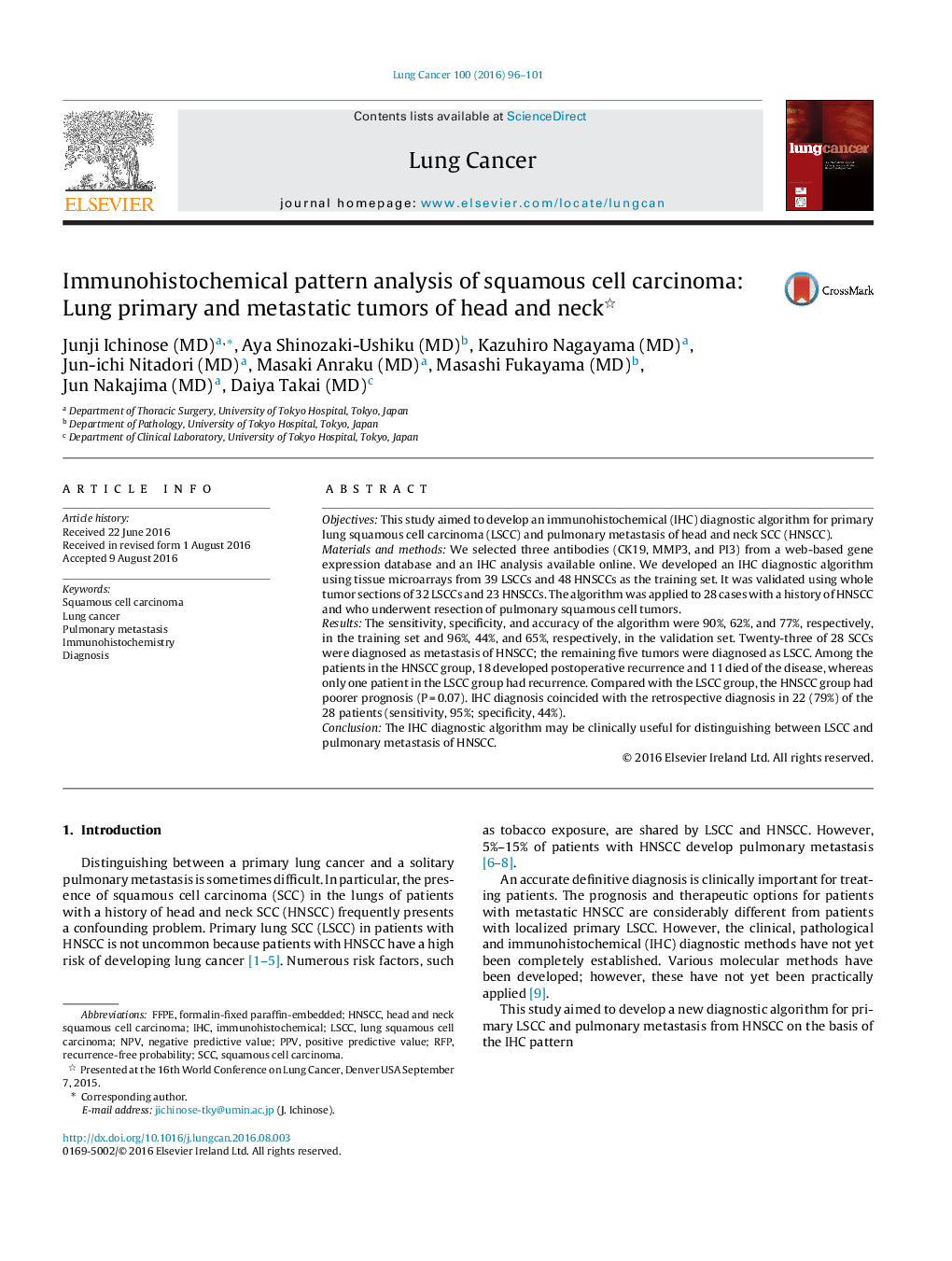| Article ID | Journal | Published Year | Pages | File Type |
|---|---|---|---|---|
| 2140401 | Lung Cancer | 2016 | 6 Pages |
•The distinction between lung primary and metastatic tumors is sometimes difficult.•We developed an immunohistochemical diagnostic algorithm using three antibodies.•The diagnosis could clearly predict the risk for tumor recurrence.•The algorithm may be useful in treatment of squamous cell carcinomas in the lung.
ObjectivesThis study aimed to develop an immunohistochemical (IHC) diagnostic algorithm for primary lung squamous cell carcinoma (LSCC) and pulmonary metastasis of head and neck SCC (HNSCC).Materials and methodsWe selected three antibodies (CK19, MMP3, and PI3) from a web-based gene expression database and an IHC analysis available online. We developed an IHC diagnostic algorithm using tissue microarrays from 39 LSCCs and 48 HNSCCs as the training set. It was validated using whole tumor sections of 32 LSCCs and 23 HNSCCs. The algorithm was applied to 28 cases with a history of HNSCC and who underwent resection of pulmonary squamous cell tumors.ResultsThe sensitivity, specificity, and accuracy of the algorithm were 90%, 62%, and 77%, respectively, in the training set and 96%, 44%, and 65%, respectively, in the validation set. Twenty-three of 28 SCCs were diagnosed as metastasis of HNSCC; the remaining five tumors were diagnosed as LSCC. Among the patients in the HNSCC group, 18 developed postoperative recurrence and 11 died of the disease, whereas only one patient in the LSCC group had recurrence. Compared with the LSCC group, the HNSCC group had poorer prognosis (P = 0.07). IHC diagnosis coincided with the retrospective diagnosis in 22 (79%) of the 28 patients (sensitivity, 95%; specificity, 44%).ConclusionThe IHC diagnostic algorithm may be clinically useful for distinguishing between LSCC and pulmonary metastasis of HNSCC.
